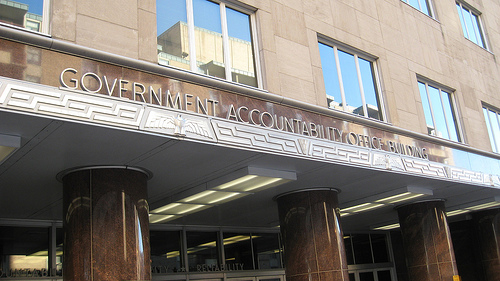
Financial regulation needs more rigorous analysis and better interagency communication.
The promise of improved government oversight of financial institutions in the wake of the 2008 financial crisis is compelling. However, reorganizing the government’s system of financial regulation is hardly an easy task and many of the problems and complications that could arise from this endeavor remain uncertain.
This is the caution to be gleaned from a report recently released by the Government Accountability Office (GAO) focusing on the hurdles of implementing the 2010 Dodd-Frank Wall Street Reform and Consumer Protection Act (Dodd-Frank).
In its report, the GAO reviewed Dodd-Frank regulations that were in effect as of July 21, 2011, such as the Securities and Exchange Commission’s (SEC) “Golden Parachute” rule.
The GAO examined whether the guidelines and procedures that regulators used to assess the future impact of the Dodd-Frank final rules were rigorous and in keeping with government “best practices.”
The GAO found that agencies’ regulatory analyses supporting their rules were often inconsistent with official Office of Management and Budget (OMB) cost-benefit analysis guidelines. Although the GAO recognized that many “costs” of financial rules (beyond paperwork costs) can be difficult to quantify, it recommended that agencies should attempt to include express consideration of the uncertainty about these costs in their analyses to give a more complete picture of the strengths and weaknesses of each rule.
The GAO also analyzed how the myriad financial regulators at the federal level must coordinate with each other to implement the Dodd-Frank rules. GAO found that interagency coordination was often ad hoc and poorly organized and recommended the establishment of more formal interagency communication protocols.
The GAO attempted to study the impact of the rules themselves, but concluded that little meaningful data on the impact of Dodd-Frank rules existed because the agencies responsible for rule implementation had developed few metrics to determine their effects. The GAO admonished financial regulators to identify quickly what metrics and data will be needed to assess the impact of these rules retrospectively.
The GAO also recommended that the Financial Stability Oversight Council (FSOC), an oversight group created by Dodd-Frank to monitor the financial stability of the United States, assume responsibility for seeing that the GAO’s recommendations in its report are followed.
In commenting on the GAO’s findings and recommendations, the financial regulatory agencies charged with implementing Dodd-Frank largely agreed — but noted the challenges of financial rulemaking, especially when the data the regulators need are proprietary. The agencies emphasized that regulated companies are reluctant to release the information needed by the government to conduct thorough cost-benefit analyses.
Congress passed Dodd-Frank in 2010 to augment regulatory oversight of financial institutions and strengthen consumer protections through the establishment of new agency, the Consumer Financial Protection Bureau (CFPB). To accomplish its goals, Dodd-Frank required CFPB along with a host of existing federal agencies, including the Office of the Comptroller of the Currency (OCC), the Federal Deposit Insurance Corporation (FDIC), and the Commodity Futures Trading Commission (CFTC), to create and enact hundreds of regulations over a number of years.
In its correspondence with the GAO, the CFPB revealed the magnitude of the interagency coordination challenge facing the federal government in implementing Dodd-Frank: it reported that over 600 interagency meetings have been held to discuss Dodd-Frank rulemakings. The CFPB noted that it was still working to hire staff and set up the agency but emphasized that good data collection and measurement were among its highest priorities.
The photograph of the GAO building is used unaltered under a Creative Commons license.



